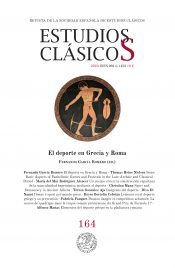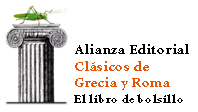Donne e sport nel mondo grecoWomen’s sport in antiquity
Diva Di Nanni
Dipartimento di Studi Umanistici - Università degli Studi di Napoli "Federico II"
https://independent.academia.edu/DivaDiNanni
https://orcid.org/0009-0002-1607-6408
Scopus Author ID 57192833573
Resumen
Questo lavoro ha lo scopo di fissare alcuni punti fermi della ricerca sul tema dell’attività agonistica femminile nel mondo antico. Innanzitutto, si è tentato di determinare le specialità in cui le donne sono risultate vincitrici, e di valutare le eventuali diversità – di tempi, luoghi e condizioni – nella loro partecipazione alle gare. Già ad un primo esame è risultato chiaro che quasi tutte le atlete considerate erano inserite in un contesto familiare di notevole rilievo, politico e sociale, tanto che si sono riscontrati anche casi di più donne di una stessa famiglia che hanno partecipato ai concorsi atletici. Successivamente, è stata verificata la possibilità per le donne, in età greco-romana, di sostenere una “liturgia agonistica”. Queste donne venivano affiancate sovente dal marito o da un familiare, anche se non era escluso che donne non sposate potessero adempiere da sole a quei compiti. Tuttavia, nei casi in cui un uomo e una donna ricoprivano contemporaneamente la stessa liturgia, il titolo della donna non era puramente onorario: in realtà la coppia si divideva gli oneri finanziari, se non si trattava addirittura di due liturgie separate.
Palabras clave: ruolo sociale donne; donne e sport; sport nel mondo antico
Abstract
This work aims to establish some fixed points of research on the theme of female competitive activity in the ancient world. First, an attempt was made to determine the specialties in which women were the winners, and to evaluate any differences – of times, places and conditions – in their participation in the competitions. Already at an initial examination it was clear that almost all the athletes considered were inserted in a family context of considerable political and social importance, so much so that there were also cases of several women from the same family who participated in athletic competitions. Subsequently, the possibility for women, in the Greco-Roman age, to support a “competitive liturgy” was verified. These women were often accompanied by their husband or a family member, even if it was not excluded that unmarried women could fulfil those tasks alone. However, in cases where a man and a woman performed the same liturgy at the same time, the title of the woman was not purely honorary: the couple shared the financial burdens, if not actually for two separate liturgies.
Keywords: sport in the ancient world; social role of women; women and sport
Referencias bibliográficas
Angeli Bernardini, P. (1986-87) «Aspects ludiques, rituels et sportifs de la course féminine dans la Grèce antique», Stadion 12/13, 17-26.
⸺ (1988) «Le donne e la pratica della corsa nella Grecia antica», in P. Angeli Bernardini (ed.), Lo sport in Grecia, Bari, 153-184.
⸺ (1995), «Donna e spettacolo nel mondo ellenistico», in R. Raffaelli (ed.), Vicende e figure femminili in Grecia e Roma, Ancona, 185-197.
Arrigoni, G. (1985) «Donne e sport nel mondo greco, religione e società», in G. Arrigoni (ed.), Le donne in Grecia, Roma-Bari, 55-200.
Bastianini G., Gallazzi C. (1993) Posidippo. Epigrammi, Milano.
⸺ (2001) Papiri dell’università degli studi di Milano – VIII. Posidippo di Pella – Epigrammi (P. Mil. Vogl. VIII 309), Milano.
Bélis, A. (1995), «Chitares, chitaristes et citarôdes en Grèce», CRAI, 1025-1065.
Bell, D. (1989), «The horse race (ΚΕΛΗΣ) in ancient Greece from the pre-classical period to the first century B.C.», Stadion 15, 167-190.
Bielman, A. (1998) «Femmes et Jeux dans le monde grec hellénistique et impérial», in R. Frei-Stolba – A. Bielman (ed.), Femmes et vie publique dans l’antiquité gréco-romaine, Lausanne, 33-50.
Bilinski, B. (1979) Agoni ginnici: componenti artistiche ed intellettuali nell’antica agonistica greca, Warsawa.
⸺ (1988), «La componente artistica e intellettuale nell’agonistica», in P. Angeli Bernardini (ed.), Lo sport in Grecia, Bari, 79-107.
- Braunstein, O. (1911) Die Politische Wirksamkeit der griechischen Frau, Leipzig 1911.
Buchner, G., Morelli, D. et al. (1952) «Testi e documenti», PP 7, 370–419.
Buonocore, M., (2008) «Spigolature epigrafiche II», Epigraphica 70, 269-298.
Cahen, E. (1907) s.v. Sebasta, Daremberg-Saglio vol. IV/2, Paris.
Caldelli, M.L. (1993 ) L’Agon Capitolinus. Storia e protagonisti dall’istituzione domizianea al IV sec., Roma.
Camia, F. (2017) «La titolatura dei sacerdoti del culto imperiale in Grecia: terminologia ed evoluzione», Historikά. Studi di storia greca e romana 7, 451–489.
Canali De Rossi, F (2011) «Hippikà corse di cavalli e di carri in Grecia, Etruria e Roma le radici classiche della moderna competizione sportiva – vol. 1 – La gara delle quadrighe nel mondo greco», Nikephoros, Beihefte.
Chapot, V. (1904) La province romaine proconsulaire d’Asie, Paris 1904.
Couve, L. (1900) s.v. Isthmia, Daremberg-Saglio vol. III/1, Paris.
Criscuolo, L. (2003) «Agoni e politica alla corte di. Alessandria. Riflessioni su alcuni epigrammi di Posidippo», Chiron 33, 311–333.
Crowther, N. B. (2010) «Observations on Boys, Girls, Youth and Age Categories in Roman Sports and Spectacles», in Z. Papakonstantinou (ed.), Sport in the Cultures of the Ancient World: New Perspectives, New York, 196-197.
De Ligt, L., De Neeve, P. W. (1988) «Ancient Periodic Markets: Festivals And Fairs», Athenaeum 66, 391–416.
De Ligt, L. (1993) Fairs And Market In The Roman Empire, Amsterdam 1993.
Di Nanni Durante, D. (2007) «I Sebastà di Neapolis. Il regolamento e il programma», Ludica. Annali di storia e civiltà del gioco, 13-14, 7-22.
⸺ (2017) «Le regine dello sport. Atlete e artiste in gara nel mondo greco-romano», Historikà VII, 271-295.
⸺ (2021), Le donne e gli agoni nel mondo Greco-romano, Napoli.
Dillon, M. (2000), «Did Parthenoi Attend the Olympic Games? Girls and Women Competing, Spectating, and Carrying out Cult Roles at Greek Religious Festivals», Hermes 128, 457–480.
Ferrandini Troisi, F. (2000) La donna nella società ellenistica. Testimonianze epigrafiche, Edipuglia.
⸺ (2006) «Testimonianze epigrafiche», in M.G. Angeli Bertinelli, A. Donati (edd.), Le vie della storia. Migrazioni di popoli, viaggi di individui, circolazione di idee nel Mediterraneo antico, Serta Antiqua et Mediaevalia 9; Roma, 145-154.
Förster, H. (1891-92) Die Sieger in den olympischen Spielen, Progr. Gymn. zu Zwickau.
Gardiner, E. N. (1988) «Le gare equestri», in P. Angeli Bernardini (ed.), Lo sport in Grecia, Bari, 185-198.
Gentili, B., Perusino, F. (2002) Le orse di Brauron. Un rituale di iniziazione femminile nel santuario di Artemide, Pisa.
Glotz, G. (1873), s.v. Gymnasiarchia in Daremberg–Saglio vol. II/2, Paris.
Giuman, M. (1999), La dea, la vergine, il sangue, Milano 1999.
Golden, M. (1998) Sport and society in ancient Greece, Cambridge.
⸺ (2004) Sport in the Ancient World from A to Z, London – New York.
Graindor, P. (1931) Athènes de Tibère à Trajan. Le Caire.
Guarisco, D. (2017) «Le “orsette” di Brauron» Storie e linguaggi 3, 2, 183-196.
Guettel Cole, S. (1985) «Ragazzi e ragazze ad Atene: Koureion e Arkteia», in G. Arrigoni (ed.), Le donne in Grecia, Roma–Bari, 15–31.
Habicht, C. (1996) «Neue Inschriften aus Kos», ZPE 112, 83–94.
Hazzard, R. (2000) Imagination of a Monarchy: Studies in Ptolemaic Propaganda (Phoenix Supplementary Volume, 37). Toronto.
Humphrey, J. H. (1986) Roman Circuses. Arenas for Chariot Racing, Berkeley.
Kahil, L. (1965) «Autour de l’Artémis Attique» AK 8, 20–33.
⸺ (1977) «L’Artémis de Brauron: rites et mystère» AK 20, 86–98.
Kajava, M. (2002) «When did the Isthmian games return to the Isthmus? (rereading Corinth 8.3.153) » CP 97, 168-178.
Kantirea, M. (2007) Les dieux et les dieux Augustes. Le culte impérial en Grèce sous les Julio–claudiens et les Flaviens. Études épigraphiques et archéologiques, Athènes.
Kapetanopoulos, E. (1976) «Gaius Iulius Nikanor, neos Homeros kai neos Themistokles» Riv.Fil. 104, 375–377.
Kent J.H., (1966) Corinth, vol. 8 parte III, The Inscriptions 1926–1950, Princeton.
Langenfeld, H. (2006) «Olympia – Zentrum des Frauensports in der Antike? Die Mädchen-wettläufe beim Hera-fest in Olympia» Nikephoros 19.3, 153-185.
Lee, H. M. (1988) «Sig3 802: Did Women compete against men in Greek athletic Festivals?» Nikephoros 1, 103-117.
Letzner, W. (2009) Der römische Circus, Mainz.
Lovatt, H. (2005) Statius and Epic Games. Sport, Politics and Poetics in the Thebaid, Cambridge.
Lozano, F. (2007) «La promocion social a traves del culto imperial: El caso de Tiberio Claudio Novio en Atenas» Habis 38, 185–204.
Magie, D. (1950) Roman Rule in Asia Minor, to the end of the third Century after Christ, Princeton 1950.
Mantas, K. (1995) «Women and Aathletics in the Roman East» Nikephoros 8, 125-144.
Mari, M., Stirpe, P. «The Greek Crown games» in A. Futrell, T. Scanlon (edd.) The Oxford Handbook of Sport and Spectacle in the ancient world, Oxford 2021, 87-97.
Meier, P. J. (1894) s.v. Agones, Pauly-Wissowa vol. I, Stuttgart.
Michel, C. (1873) s.v. Theoros in Daremberg–Saglio vol. V, Paris.
Miller, S. G. (2004) Ancient Greek Athletics, Yale University Press.
Miranda, E. (2007) «Frammento di lastra iscritta», in Turchia. 7000 anni di storia, Napoli 27 aprile-31 maggio 2007, Napoli, 21.
⸺ (2017) «I Sebasta dell’82 d.C.: restauro delle lastre e aggiornamenti» Historikà VII, 253 – 270.
⸺ (2019) «Su due kitharodoi di Cos» Axon 3, 2, 329–343.
Montepaone, C. (1999) Lo spazio del margine, Roma.
Monti, P. (1968) Ischia preistorica, greca, romana, paleocristiana, Napoli.
⸺ (1983) Ischia, archeologia e storia, Napoli.
Moretti, L. (1953) Iscrizioni agonistiche greche, Roma.
⸺ (1957) Olympionikai, i vincitori negli antichi agoni olimpici, Roma.
⸺ (1977) «La scuola, il ginnasio, l’efebia», in AA.VV. Storia e civiltà dei Greci, vol. 8, Bompiani, Milano.
Motepaone, C. (1979) «L’ἀρκτεία a Brauron» SSR 3,2, 343–364.
Müller, H. (1980) «Claudia Basilo und ihre Verwandtschaft» Chiron 10, 457–84.
Nafissi, M. (1995) «Zeus Basileus di Lebadeia. La politica religiosa del koinon beotico durante la guerra cleomenica» Klio 77, 149–169.
Napolitano, M. L. (1985) «Donne spartane e τεκνοποιία» Aion (archeol.) 7, 19-50.
Nélis-Clement, J., Roddaz, J. M. (2008) Le cirque romain et son image, Bordeaux.
Newby, Z. (2021) «Greek Festivals in the Hellenistic Era», in A. Futrell, T. Scanlon (edd.) The Oxford Handbook of Sport and Spectacle in the ancient world, Oxford 2021, 124-132.
⸺ «Greek Festivals in the Roman Era», in A. Futrell, T. Scanlon (edd.) The Oxford Handbook of Sport and Spectacle in the ancient world, Oxford 2021, 168-181.
Nicholson, N., « Greek Hippic Contests», in A. Futrell, T. Scanlon (edd.) The Oxford Handbook of Sport and Spectacle in the ancient world, Oxford 2021, 242-253
Nilsson, M. P. (1973) La scuola in età ellenistica (trad. it.), Firenze.
Oliver, J. H. (1973) «Imperial Commissioners in Achaia» GRBS 14, 389–405.
Palagia, O., Choremi–Spetsieri, A. (2007) The Panathenaic Games, Oxford.
Patrucco, R. (1972) Lo sport nella Grecia antica, Firenze.
Pavan, A. (2009) La gara delle quadrighe e il gioco della guerra: saggio di commento a P. Papinii Statii Thebaidos liber VI 238-549. Minima philologica 6, Alessandria.
Perrin–Saminadayar, E. (2007) Education, culture et société à Athènes, Paperback.
Pleket, H. W. (1969) Epigraphica: Texts on the economic history of the Greek world, 2 voll., Leiden.
Price, S. R. F. (1985) Rituals and Power. The Roman imperial cult in Asia Minor, Cambridge.
Provenza, A. (2010-2011) «Gli Heraia di Olimpia e le donne di Elide. Riti di passaggio e inni tra Era e Dioniso», in D. Castaldo, F. G. Giannachi, A. Manieri (edd.) Poesia, musica e agoni nella Grecia antica = Poetry, music and contests in Ancient Greece. Proceedings of the 4th annual meeting of Moisa: the international society for the study of greek and roman music and its cultural heritage (Lecce 2010), Rudiae. Ricerche sul mondo classico 22-23, 97-125.
Quaß, F. (1993) Die Honoratiorensicht in den Städten des griechischen Ostens, Stuttgart.
Rizakis, S., Zoumbaki, A. D., (2017) «Local Elites and Social Mobility in Greece under the Empire: The Cases of Athens and Sparta» in A. D. Rizakis, F. Camia, S. Zoumbaki, (edd.) Social Dynamics under Roman Rule Mobility and Status Change in the Provinces of Achaia and Macedonia, Proceedings of a Conference Held at the French School of Athens, 30–31 May 2014 (Meletemata 74), Athens, pp. 159–180.
Robert, C. (1900) «Die Ordnung der olympischen Spiele und die Sieger der 75.–83. Olympiade», Hermes 35, 141–195.
Romano, D. G. (1983) «The ancient stadium: Athletes and Arete» AW 8, 9-16.
⸺ (2021) «Greek Footraces and Field Events» in A. Futrell, T. Scanlon (edd.) The Oxford Handbook of Sport and Spectacle in the ancient world, Oxford 2021, 209-220.
Saglio, E. (1873) s.v. Agonothetes in Daremberg–Saglio vol. I, Paris.
Scanlon. T. (1984) «The footrace of the Heraia at Olympia» AW 9, 77-90.
⸻ (2021) «Gender and Sexuality in Greek Sport» in A. Futrell, T. Scanlon (edd.) The Oxford Handbook of Sport and Spectacle in the ancient world, Oxford 2021, 653-675.
Schmalz, G. (2009) Augustan and Julio–Claudian Athens, A New Epigraphy and Prosopography (Mnemosyne Suppl. 302), Leiden–Boston.
Serwint, N. (1993) «The female athletic costume at the Heraia and prenuptial initiation rites» AJA 97, 403-22.
Shear, T. L. Jr. (1981) «Athens: From City–State to Provincial Town» Hesperia 53, 356–377.
Sinn, U. (2021) «Origins of the Olympics to the Sixth Century BCE» in A. Futrell, T. Scanlon (edd.) The Oxford Handbook of Sport and Spectacle in the ancient world, Oxford 2021, 65-73.
Spawforth, A. J. S. (1985) «Families at Roman Sparta and Epidaurus» ABSA 80, 191–258.
⸺ (1994) «Corinth, Argos and the Imperial Cult: Pseudo–Julian, Letters 198» Hesperia 63, 211–32.
⸺ (1997) «The early reception of the imperial cult in Athens: problems and ambiguities», in M. C. Hoff, S. I,. Rotroff (edd.) The Romanisation of Athens, Oxford, 188–191.
Spiro, F. (1900) «Ein Leser des Pausanias», in G. Reimer (ed.) Festschrift Johannes Vahlen zum siebenzigsten Geburtstag gewidmet von seinen Schülern, Berlin, 129-138.
Stengel, P. (1913) s.v. Heraia in Pauly-Wissowa vol. VIII1, Stuttgart.
Thräde, K. (1910) s.v. Frau in Pauly–Wissowa vol. III2, Stuttgart.
Trebilco, P. R. (1991) Jewish Communities in Asia Minor, Oxford.
Van Bremen, R. (1996) The limits of partecipation: Women and civic Life in the Greek East in the Hellenistic and Roman periods, Amsterdam.
Weiler, I. (2021) «‵Professional’ Organizations in the Hellenistic World» in A. Futrell, T. Scanlon (edd.) The Oxford Handbook of Sport and Spectacle in the ancient world, Oxford 2021, 521-533.
West, A. B. (1928) «Notes on Achaean Prosopography and Chronology» CPh 23, 258-269.
Wörrle, M. (1988) Stadt und Fest im kaiserzeitlichen Kleinasien. Studien zu einer agonistischen Stiftung aus Oinoanda, München.
Ziehen, L. (1900) s.v. Panathenaia in Pauly–Wissowa vol. XVIII3, Stuttgart.
Revista
-
Sobre la revista
Página principal
-
Estatutos
Estatutos de la Revista Estudios Clásicos
-
Código ético
Declaración de buenas prácticas
-
Normas de recepción y envío
Indicaciones para envíos de artículos
-
Equipo editorial
Consejos de redacción y asesor
-
Comité de honor
Comité de honor
Información
-
Para autores
Publicar con nosotros
-
Para evaluadores
Normas para evaluar artículos
-
Para bibliotecas
Información bibliográfica
-
Contacto
Cuestiones y preguntas
Publicar en EClás
-
Envío de originales
Artículos y reseñas
-
Normas de publicación
Descarga normas en PDF
-
Estilo CSL EClás
Estilo CSL EClás
-
Índices de calidad
Bases de datos e impactos


 c/ Serrano, 107
c/ Serrano, 107